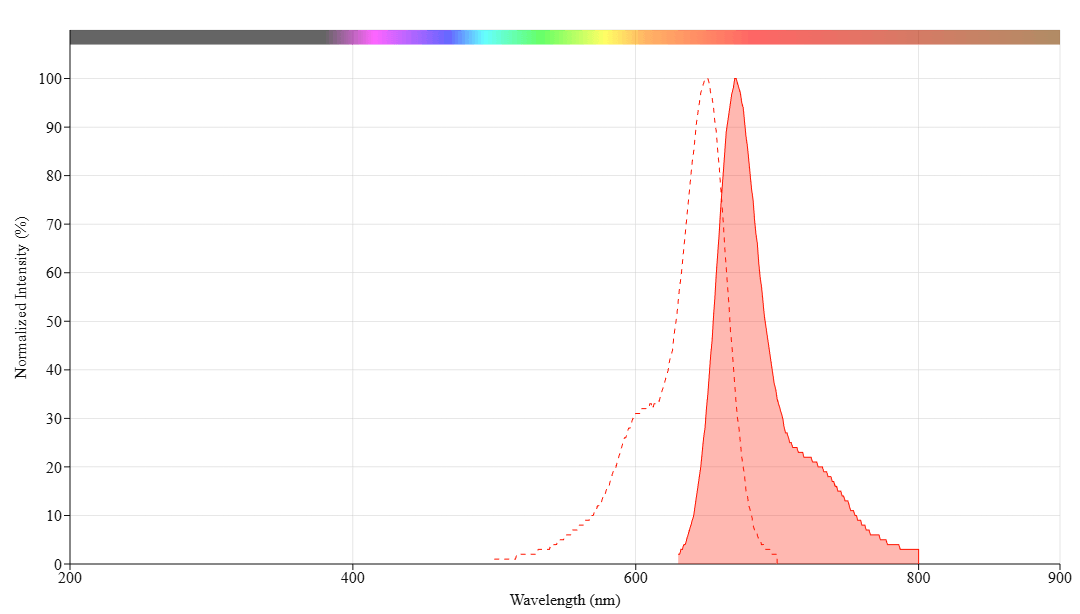XFD647 acid
XFD647 acid is a non-reactive, far-red fluorescent dye with an excitation/emission of 650/671 nm that is used for flow cytometry and microscopy applications.
- Bright & Stable: Delivers intense fluorescence with resilience to photobleaching and pH variations from 4 to 10
- Hydrophilic: Minimizes aggregation, enhancing signal clarity for advanced imaging and live-cell studies


| Catalog | Size | Price | Quantity |
|---|---|---|---|
| 1797 | 10 mg | Price |
Physical properties
| Molecular weight | 973.03 |
| Solvent | DMSO |
Spectral properties
| Correction factor (280 nm) | 0.03 |
| Correction factor (565 nm) | 0.1109 |
| Extinction coefficient (cm -1 M -1) | 270000 |
| Excitation (nm) | 650 |
| Emission (nm) | 671 |
| Quantum yield | 0.33 1 |
Storage, safety and handling
| H-phrase | H303, H313, H333 |
| Hazard symbol | XN |
| Intended use | Research Use Only (RUO) |
| R-phrase | R20, R21, R22 |
| Storage | Freeze (< -15 °C); Minimize light exposure |
Documents
Contact us
| Telephone | |
| Fax | |
| sales@aatbio.com | |
| International | See distributors |
| Bulk request | Inquire |
| Custom size | Inquire |
| Technical Support | Contact us |
| Request quotation | Request |
| Purchase order | Send to sales@aatbio.com |
| Shipping | Standard overnight for United States, inquire for international |
Page updated on December 4, 2025

